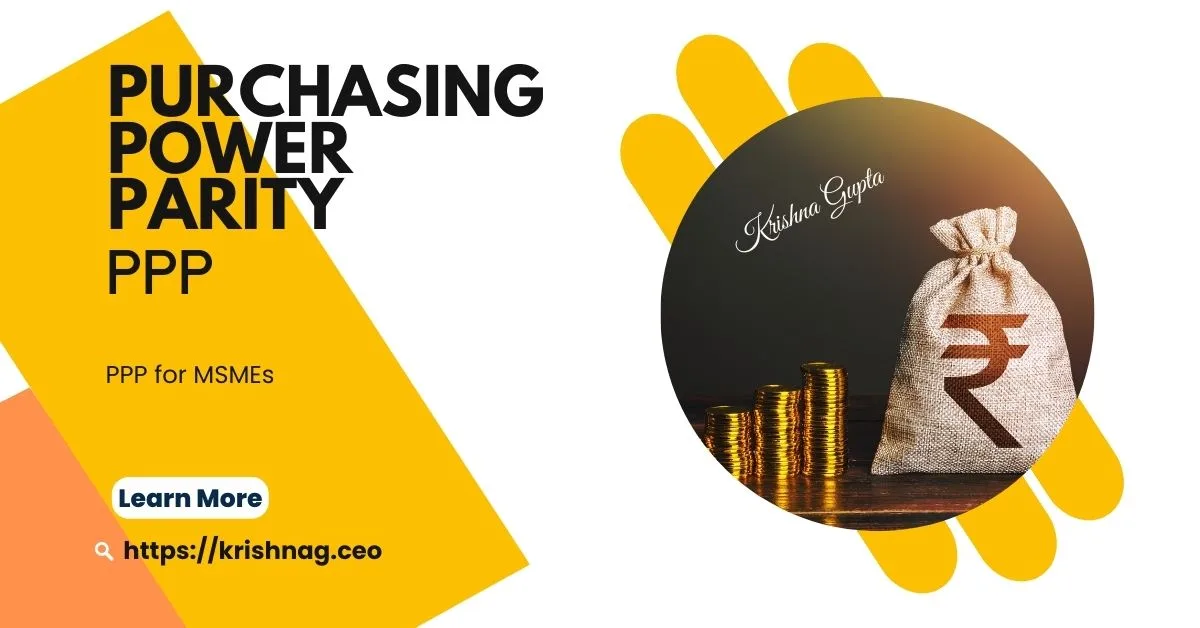Level Up Your Business Game: Understanding Purchasing Power
Parity (PPP) for MSMEs
Have you ever wondered how much “bang for your buck” you’re getting when buying raw materials or equipment? Or maybe you’re an exporter, curious about the actual value of your products overseas. Enter Purchasing Power Parity (PPP), your key to unlocking smarter financial decisions.
Imagine a magic mirror that reflects the actual spending power of your rupees across different countries. That’s what PPP does. It compares the cost of a basket of essential goods and services in other nations, revealing how far your money can stretch.
Now, why should MSMEs in India care about this fancy term? Because it’s a game-changer:
- Import smarter: Say you’re buying steel from China. PPP tells you if the quoted price is a good deal compared to what it would cost in India, considering local living standards. No more overpaying for materials!
- Export with confidence: Are you worried your handicrafts are priced too high for the US market? PPP helps you set competitive prices that reflect your products’ actual value to American buyers.
- Benchmark your business: Are you curious how Indian MSMEs stack up against their global counterparts? PPP allows you to compare production costs and competitiveness across different countries.
But wait, there’s more! Here are the superpowers of PPP:
- Informed decision-making: No more flying blind! PPP data empowers you to make strategic choices about sourcing, pricing, and expansion plans.
- Improved profitability: By optimising your spending and pricing based on PPP, you can squeeze more profit out of every rupee.
- Enhanced competitiveness: Stand out from the crowd! Understanding PPP helps you offer competitive prices and products that resonate with international markets.
Of course, no superpower is perfect. Here’s a heads-up on PPP’s limitations:
- It’s a snapshot, not a movie: PPP data gives a general picture, but individual product prices and exchange rates can fluctuate.
- Not all baskets are created equal: The basket of goods used for PPP calculations might not perfectly reflect your specific industry or needs.
- Data can be tricky: Finding and interpreting PPP data can be technical, so research or seek expert help.
Remember, PPP is a powerful tool, but it’s just one piece of the puzzle. Use it wisely, along with your business acumen and market research, to unlock exciting opportunities and take your MSME to the next level!

The PPP (Purchasing Power Parity) for India can be expressed in two ways:
1. GDP per capita (PPP): This tells you how much “stuff” the average Indian can buy with their income compared to the average person in other countries. As of 2022, India’s GDP per capita (PPP) was $22,882. This means the average Indian has the same purchasing power as someone in another country who earns $22,882 annually, even if their actual currency might differ.
2. PPP conversion factor: This is a direct exchange rate, considering the difference in price levels between countries. As of 2022, the PPP conversion factor for India was 22.632. This means that 1 Indian Rupee has the same purchasing power as 22.632 international dollars (a hypothetical currency representing the average price level of all countries).
So, MSME warriors, are you ready to embrace the power of PPP? Go forth and conquer the global market!